KAUST-NSF conference brings environmental monitoring experts to campus
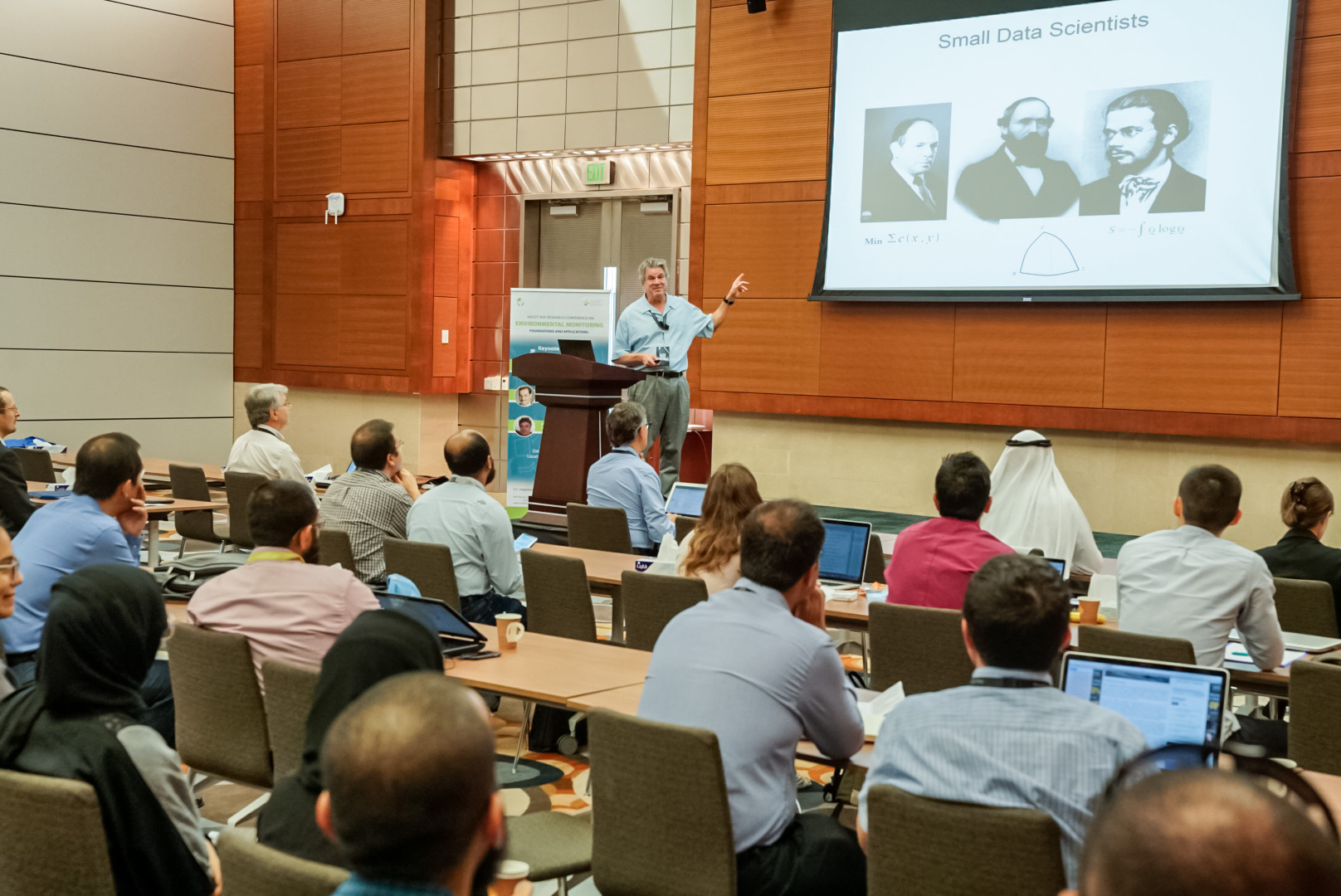
Professor Allen Tannenbaum from the State University of New York at Stony Brook was a keynote speaker at the recent on campus KAUST-NSF Conference on Environmental Monitoring. Photo by Andrea Bachofen-Echt.
-By Caitlin Clark, KAUST News
The University held the KAUST-U.S. National Science Foundation (NSF) Conference on Environmental Monitoring from November 6 to 8, 2017, on campus.
The KAUST-NSF Conference on Environmental Monitoring took place on campus from November 6 to 8, 2017. File image.
"The theme of the conferences is generally on sustainability, and the fifth cycle of the conference focused on environmental monitoring and sensing," Shamma explained. "Applications involved collecting and transferring data using sensor communication networks; analyzing data using signal processing; and making real-time decisions with the aid of high performance computing and machine actuation."
Conference topics included the domains of urban, ocean and agricultural applications, along with the foundational areas of communications and networking, signal processing and control.
International engagement
"We as organizers also worked to ensure the conference engaged internationally leading authorities, industry experts, fellow in-Kingdom researchers and KAUST researchers," Shamma said.
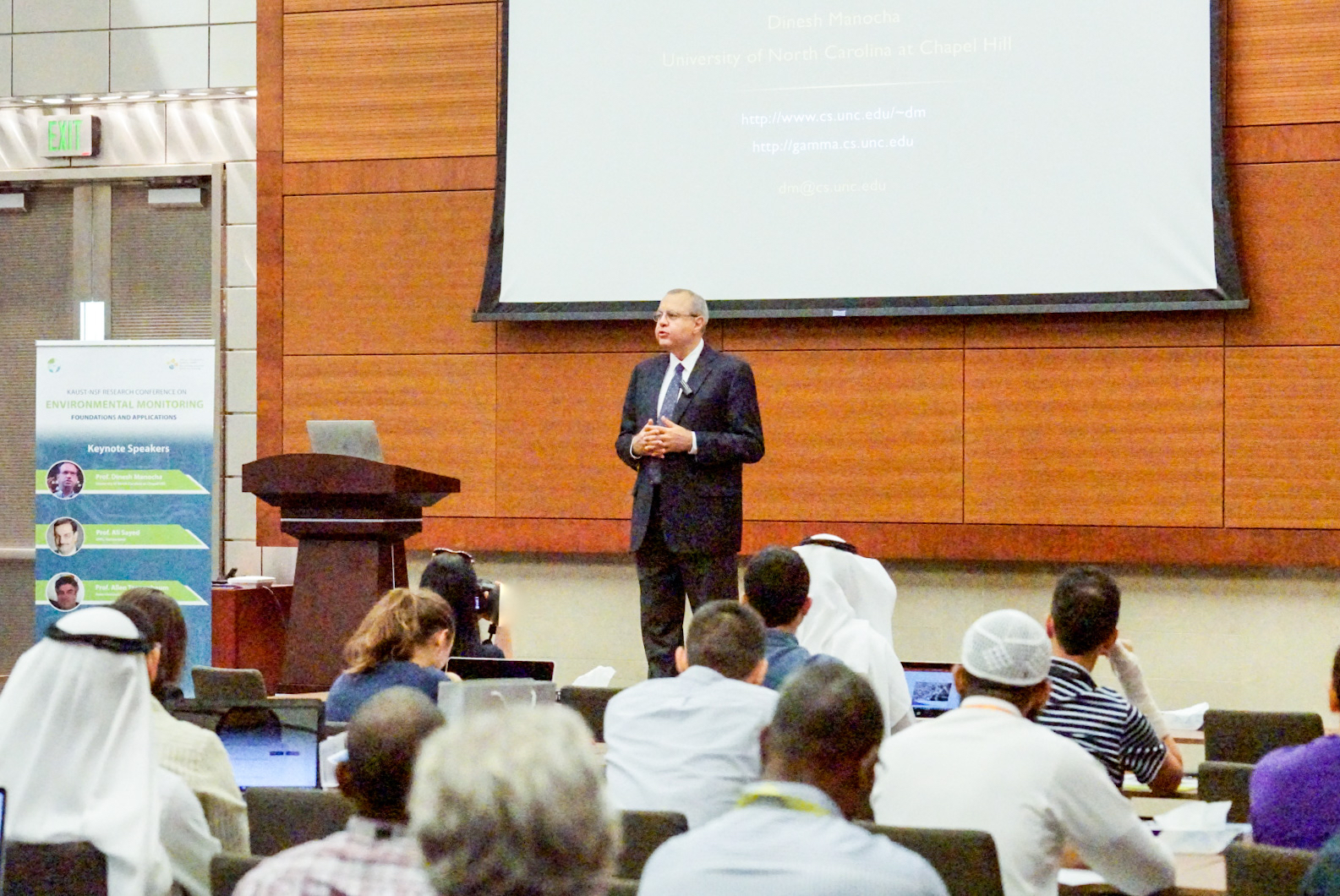
Mootaz Elnozahy, dean of the University’s Computer, Electrical and Mathematical Science and Engineering division, gave the opening remarks at the recent on campus KAUST-NSF Conference on Environmental Monitoring. Photo by Andrea Bachofen-Echt.
Mootaz Elnozahy, dean of the University's Computer, Electrical and Mathematical Science and Engineering division, noted he hoped "the workshop was a means for scientific exchange and to establish relationships that are important for any university. Through the event, we wanted to reach out to others around the world to make connections and learn about research taking place here and at other universities."
Dr. Teofilo Abrajano, director of the University's Office of Sponsored Research, reiterated the value of the conferences for KAUST.
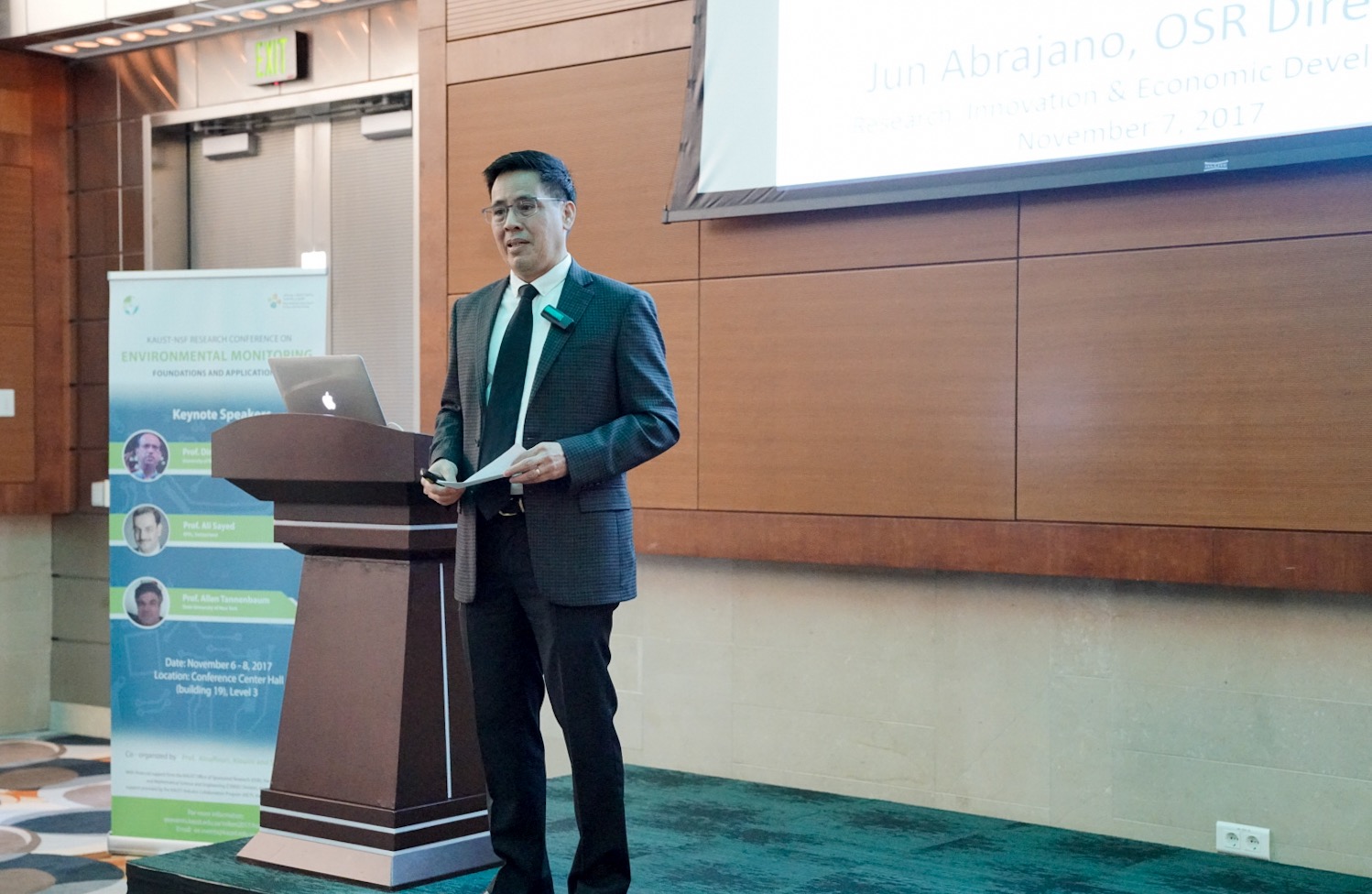
Dr. Teofilo Abrajano, director of the University’s Office of Sponsored Research, noted the University's collaboration with the NSF is extremely important during his opening remarks at the KAUST-NSF Conference on Environmental Monitoring. Photo by Andrea Bachofen-Echt.
"We collaborate with the NSF and we engage the international community in a forum to discuss recent knowledge generated and knowledge to be generated," he said. "By bringing the strongest players worldwide into one room, we hope collaborations will form to create fluid, international interaction."
High-profile keynotes
The conference featured three keynote speakers: Ali Sayed, the dean of engineering at École polytechnique fédérale de Lausanne (EPFL); Allen Tannenbaum, distinguished professor of computer science and applied mathematics & statistics at the State University of New York at Stony Brook; and Dinesh Manocha, the Phi Delta Theta/Mason distinguished professor of computer science at the University of North Carolina at Chapel Hill. It also included 24 other speakers from industry, KAUST and other elite international universities from around the world.
Agent interactions
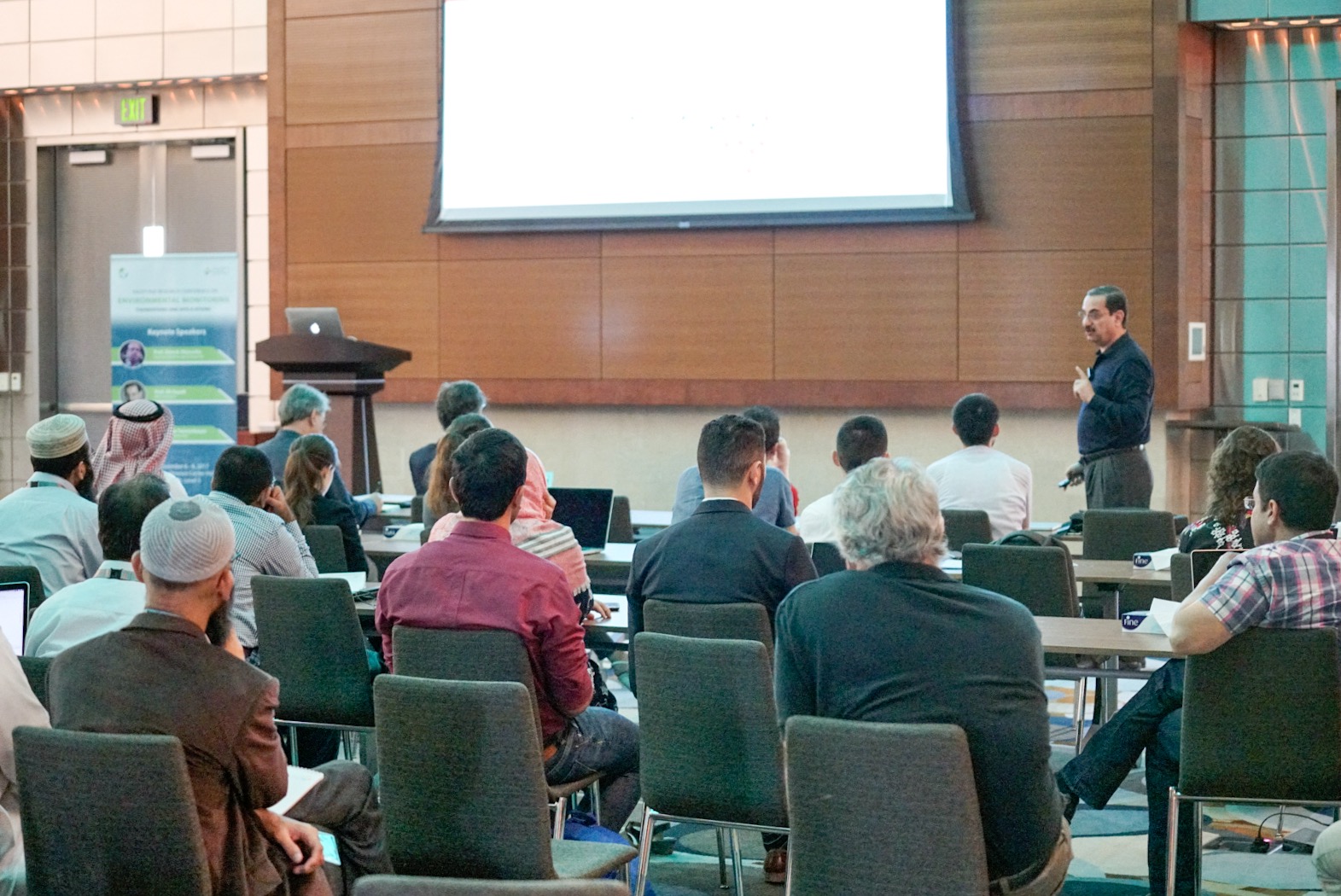
Ali Sayed, dean of engineering at EPFL, was a keynote speaker at the recent on campus KAUST-NSF Conference on Environmental Monitoring. Photo by Andrea Bachofen-Echt.
In his keynote entitled "Diffusion Learning Over Weak Graphs," Sayed discussed interactions among networked agents influencing the beliefs of agents about the state of nature. He also examined social learning and the diffusion of information over weakly connected graphs where the flow of information is asymmetric—such as in social networks like Twitter.
"It is not unusual for some influential agents like celebrities to have a large number of followers, while at the same time the influential agent may not be following most of them," he explained.
"A similar effect arises when social networks operate in the presence of stubborn agents that insist on their opinion regardless of the evidence provided by observations or by neighboring agents," he continued. "It turns out that weak graphs influence the evolution of the agents' learning in an interesting manner and facilitate the spread of false information."
Network dependence
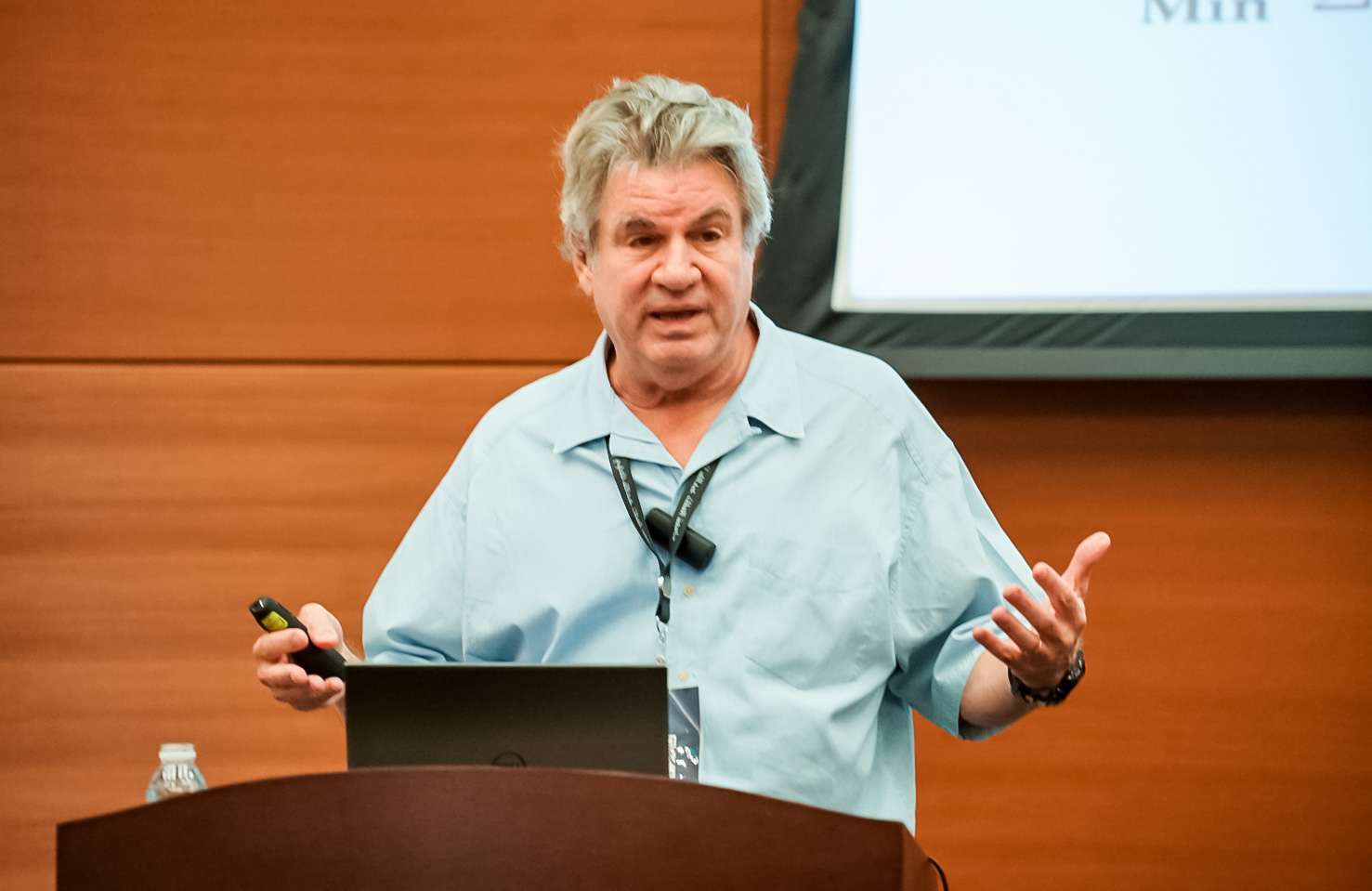
Professor Allen Tannenbaum from the State University of New York at Stony Brook gave a keynote speech at the recent on campus KAUST-NSF Conference on Environmental Monitoring. Photo by Andrea Bachofen-Echt.
"For the time-critical functionality in transferring resources and information, a key requirement is the ability to adapt and reconfigure in response to structural and dynamic changes while avoiding disruption of service and catastrophic failures," he noted.
"Many interesting networks consist of a finite but very large number of nodes or agents that interact with each other. The main challenge when dealing with such networks is to understand and regulate the collective behavior," Tannenbaum added. "Our goal is to develop mathematical models and optimization tools for treating the Big Data nature of largescale networks while providing the means to understand and regulate the collective behavior and the dynamical interactions across such networks."
Movement in physical and virtual worlds
"From record-setting crowds at rallies to robot swarms in the field to avatars in social virtual reality, our world is experiencing a continuing rise of complex distributed systems of independently moving humans in physical and virtual worlds," Manocha said during his presentation entitled "Simulating and Sensing Pedestrian Movements and Behaviors."
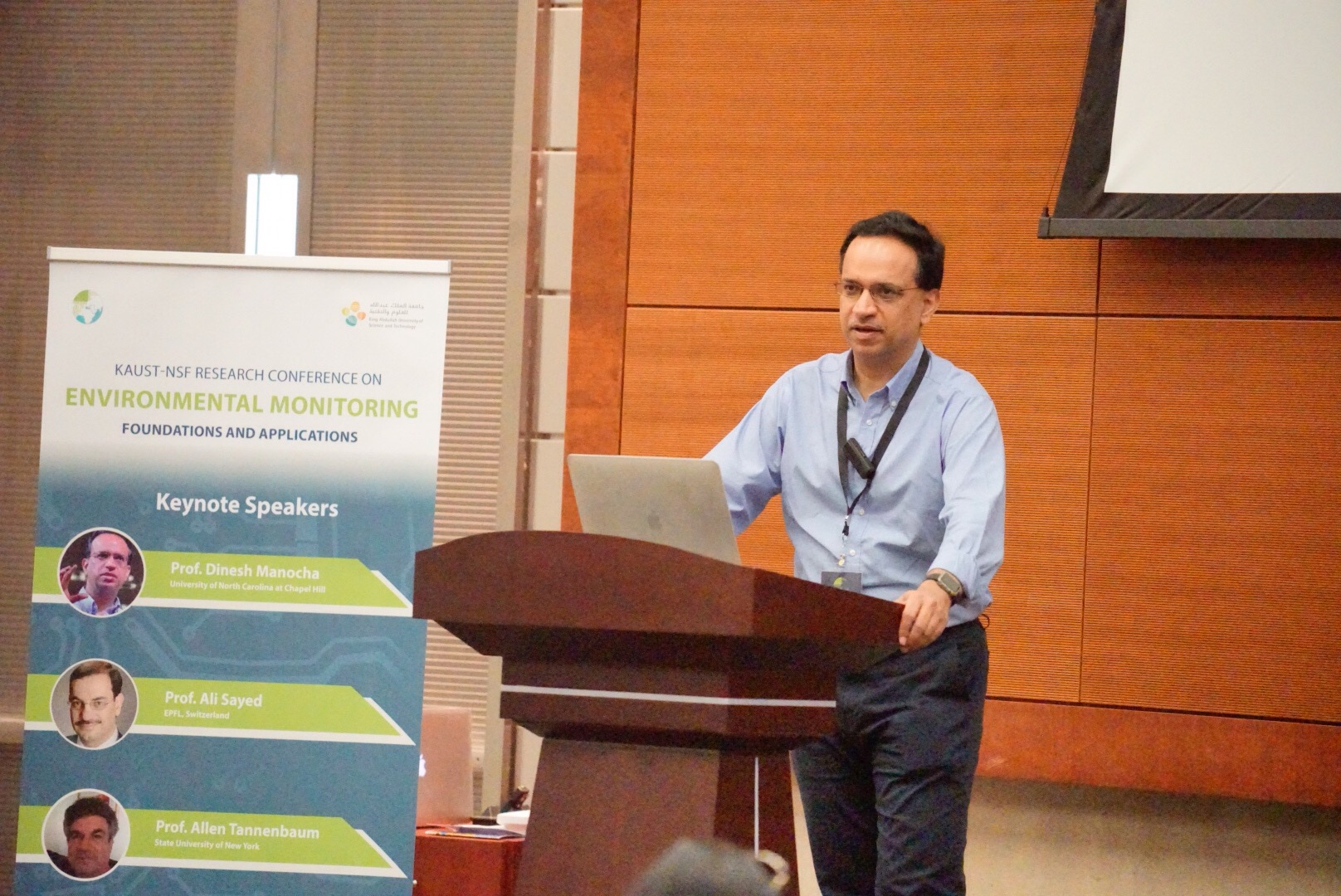
Dinesh Manocha, distinguished professor of computer science at the University of North Carolina at Chapel Hill, was a keynote speaker at the recent on campus KAUST-NSF Conference on Environmental Monitoring. Photo by Andrea Bachofen-Echt.
"There are many applications for these models, such as improving human-robot cooperation, enhancing social interactions and conceptualizing urban layouts," he said.
Manocha and his research team have worked on simulating and sensing the movements of pedestrians as part of a crowd, developing velocity-space models to compute cooperative motion paths and behaviors for a group of independent agents sharing the same physical world or virtual space. The navigation tools and personality trait theory enable the characterization of the personalities of pedestrians from crowd videos and can be used to identify anomalies in their behaviors.
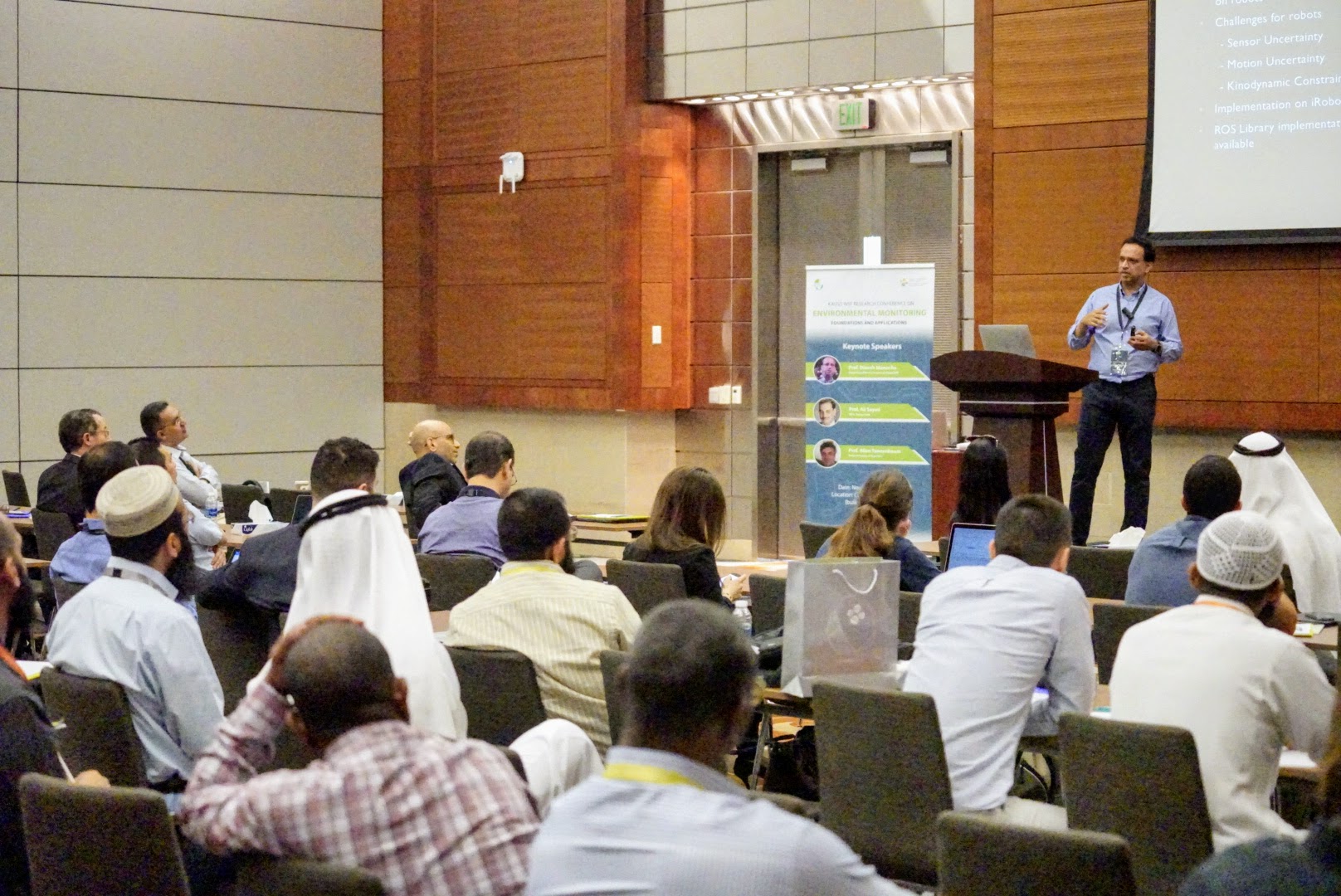
Distinguished Professor Dinesh Manocha from the University of North Carolina at Chapel Hill gave a keynote speech at the KAUST-NSF Conference on Environmental Monitoring. Photo by Andrea Bachofen-Echt.
Covering environmental monitoring
The conference's other speakers highlighted a range of topics, including underwater robotics and cooperative marine robotics; large scale data science problems; crowd sensing during Hajj and Umrah; environmental monitoring using unmanned aerial vehicles (UAVs); smart desalination systems and groundwater usage; smart cities; and the Internet of Things.
The event also featured a poster session on November 7, during which students and postdoctoral fellows from KAUST and abroad presented their research work in related fields.
Related stories:
- The best and the brightest
- Conference highlights University's research and collaborations
-
The next generation of sensing platforms

